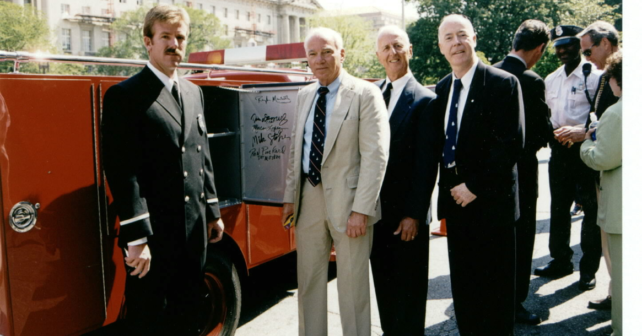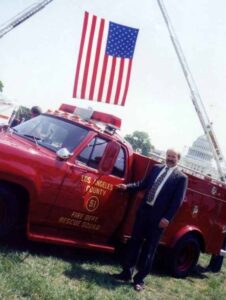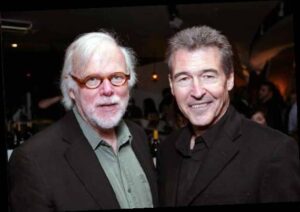

Explore This Issue
ACEP Now: Vol 41 – No 06 – June 2022Squad 51 from the show in Washington, D.C., in May 2000 at the ACEP National EMS Week event on the National Mall.
That system didn’t last long, however. Bob Cinader influenced one of the county supervisors who became very involved with the program. That supervisor was friends with then California Governor Ronald Reagan, who he convinced to pass a bill into law allowing paramedics to perform medical tasks including defibrillation and IV starts. Improvements in legislation meant medications got to patients more quickly and survival rates dramatically improved.
“It became very humbling,” Dr. Stewart says, “because I couldn’t see how we could affect any change without this happening. I was a very minor player in something that became a very major thing.”
Rick Murray credits the series with inspiring him to become a paramedic, saying that watching “Emergency!” made him realize just how unprepared he was as a young volunteer fire fighter riding in an ambulance. “When I saw the show, I thought, ‘Those paramedics are like mini-doctors. They’ve got all of the right equipment and training.’”
Murray hoped life could somehow imitate Hollywood in this respect. Ultimately, through his work as a paramedic officer for a fire department, and then working with his state’s health department and later with ACEP for 25 years, he had the opportunity to help make that happen. “Emergency!” had inspired him and the timing had been perfect. He says, “I was very fortunate to have been in the right place at the right time in the early years of EMS.”
Renée Bacher is a freelance medical writer located Baton Rouge, Louisiana.
Pages: 1 2 3 | Single Page



One Response to ““Emergency!” A TV Series That Transformed Pre-Hospital Care, Turns 50”
May 21, 2022
Walter Schrading, MD, FACEP, FAWMRon Stewart has mentored a generation of emergency care providers, including me! He has improved EMS care immeasurably. Thank you Ron, for your years of service and many accomplishments.